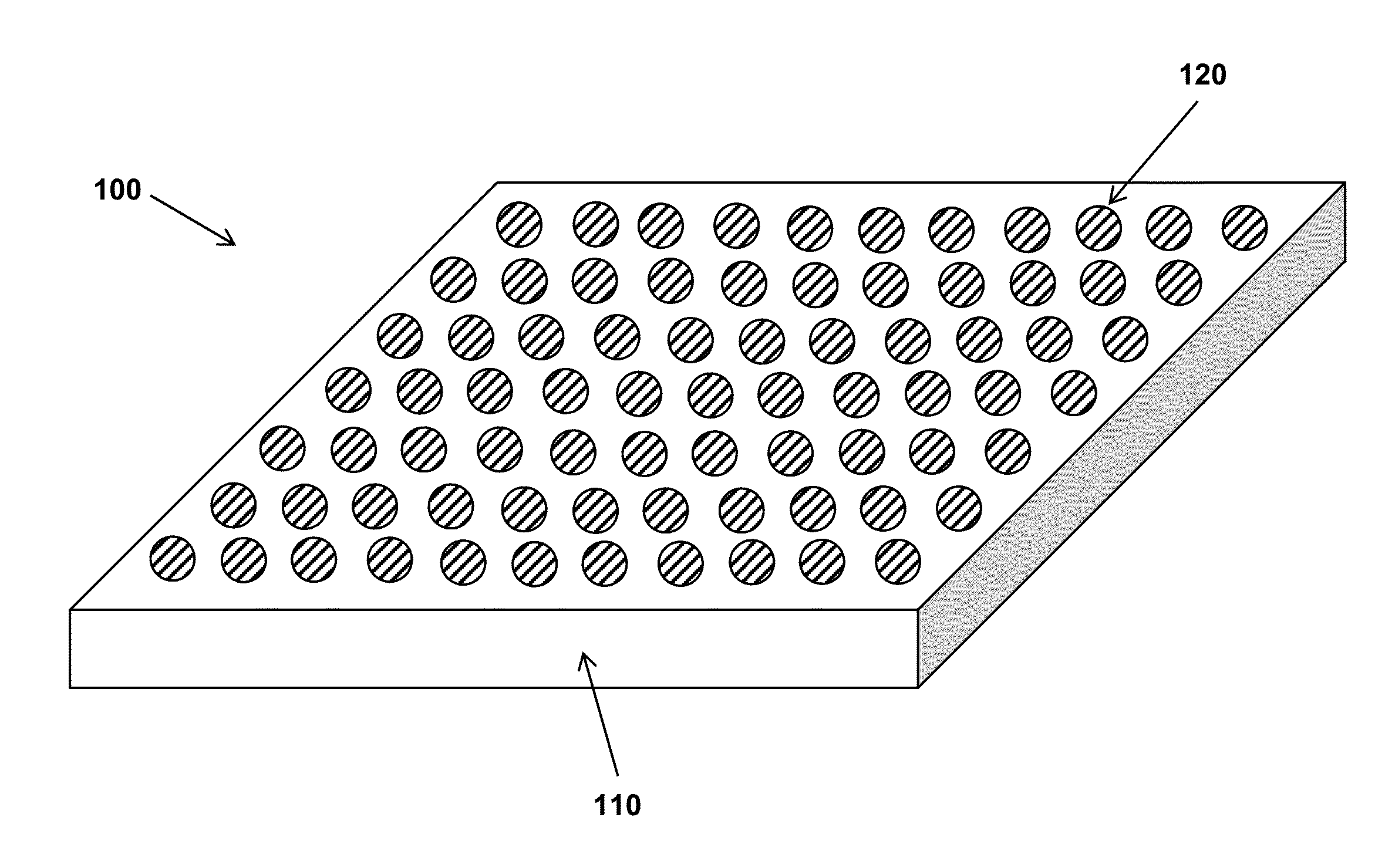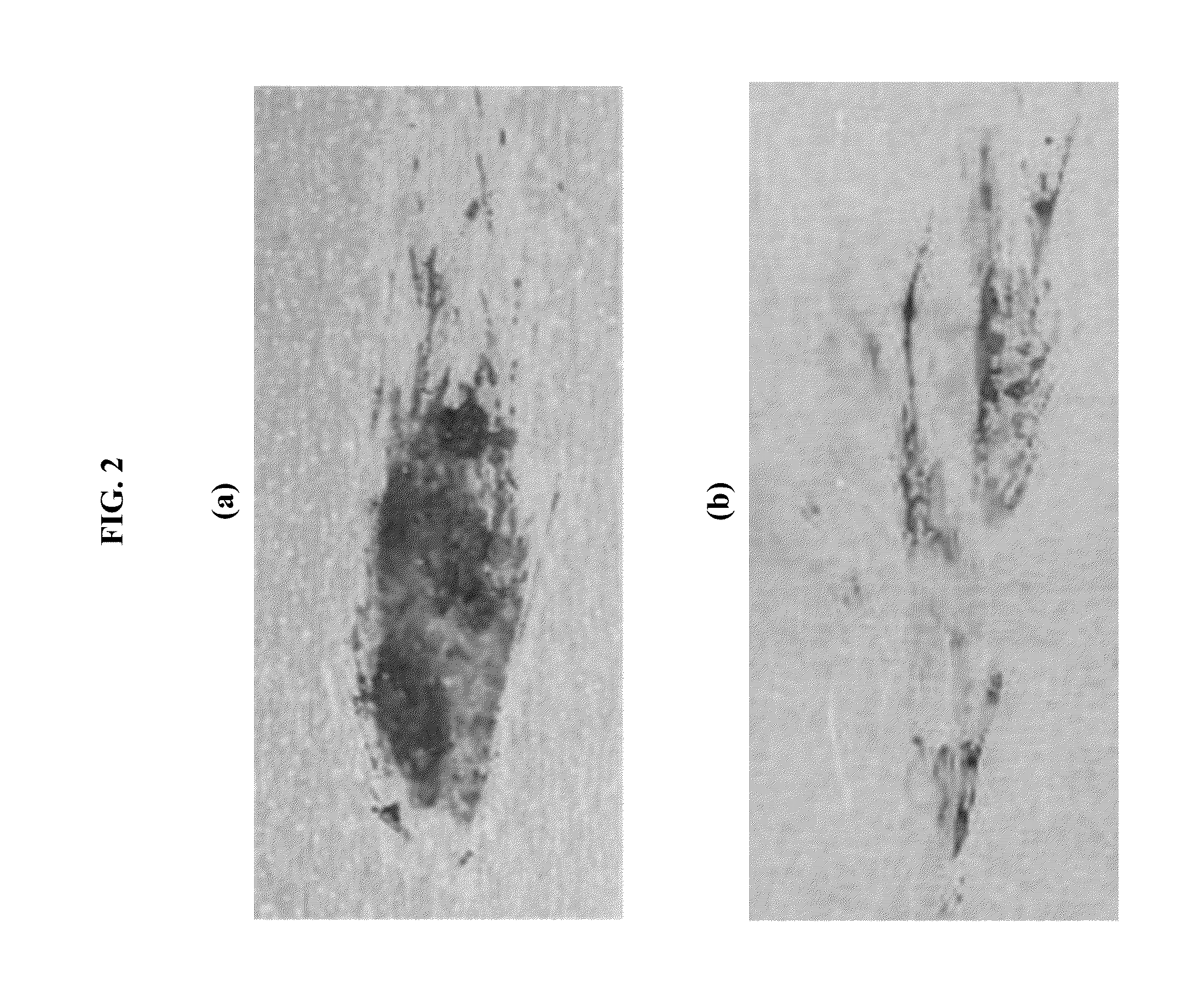Low-friction fluorinated coatings
a fluorinated coating and low friction technology, applied in the direction of coatings, organic chemistry, thickeners, etc., can solve the problems of increasing drag and thus fuel consumption, affecting vehicle fuel economy, aesthetics, and operator vision, and adding a large size and weight penalty
- Summary
- Abstract
- Description
- Claims
- Application Information
AI Technical Summary
Benefits of technology
Problems solved by technology
Method used
Image
Examples
example 1
Synthesis of Low-Friction Fluorinated Coating
[0222]4,4′-Methylenebis(cyclohexyl isocyanate) (HMDI), 1,4-butanediol (BD), and dibutyltin dilaurate (DBTDL) are purchased from Aldrich. Fluorolink 5147X PFPE-ethoxylated diol is purchased from Solvay Specialty Polymers.
[0223]Hydroxy-terminated poly(perfluoropolyether) (9.00 g, 3.73 mmol, Fluorolink 5147X) is placed in a 3-neck roundbottom flask that contains an inlet for argon and is equipped with an overhead stirrer (Teflon shaft and blade). While stirring, 4,4′-methylenebis(cyclohexyl isocyanate) (4.89 g, 18.66 mmol) is added to the solution and the flask is placed in an oil bath at 100° C. Dibutyltin dilaurate (0.02 wt. %) is then added to the solution using a micropipette and the reaction is allowed to proceed.
[0224]After 1 hr, the prepolymer is allowed to cool down to room temperature. The prepolymer is diluted with tetrahydrofuran (15 mL) and placed in a centrifugal mixer (FlackTek DAC 600).
[0225]In a separate vial, 1,4-butanediol ...
example 2
Synthesis of Low-Friction Fluorinated Coating
[0227]4,4′-Methylenebis(cyclohexyl isocyanate) (HMDI), 1,1,1-tris(hydroxymethyl) propane (TMP), and dibutyltin dilaurate (DBTDL) are purchased from Aldrich. Fluorolink 5147X PFPE-ethoxylated diol is purchased from Solvay Specialty Polymers.
[0228]Hydroxy-terminated poly(perfluoropolyether) Fluorolink 5147X (4.5 mmoles, 10.8 g) and HMDI (22.5 mmoles, 5.895 g) are added into a 3-neck flask equipped with a mechanical stirrer. The reaction flask is placed in a 100° C. oil bath. The reaction is carried out under argon. 3.66 mg of DBTDL is added to the mix. The reaction mixture is stirred at 100° C. for 1 hour. The reaction flask is removed from the 100° C. oil bath, and allowed to cool down before adding THF (20 mL) and TMP (12 mmoles, 1.611 g) dissolved in MEK (10 mL), creating a copolymer. The copolymer is cast from solution or sprayed using an airbrush to create a polyurethane film / coating.
[0229]The coating sample is placed on a variable-ang...
example 3
Synthesis of Low-Friction Fluorinated Coating
[0230]4,4′-Methylenebis(cyclohexyl isocyanate) (HMDI), 1,1,1-tris(hydroxymethyl) propane (TMP), and dibutyltin dilaurate (DBTDL) are purchased from Aldrich. Fluorolink 5158X PFPE-ethoxylated diol is purchased from Solvay Specialty Polymers.
[0231]Fluorolink 5158X (3.25 mmoles, 9.5 g) and HMDI (14.98 mmoles, 3.93 g) are added into a 2-neck flask equipped with a mechanical stirrer. The reaction flask is placed in a 100° C. oil bath. The reaction is carried out under argon. 2.3 mg of DBTDL is added to the mix. The reaction mixture is stirred at 100° C. for 1 hour. The reaction flask is removed from the 100° C. oil bath, and allowed to cool down before adding THF (10 mL) and TMP (8 mmoles, 1.074 g) dissolved in MEK (7 mL), creating a copolymer. The copolymer is cast from solution or sprayed using an airbrush to create a polyurethane film / coating.
[0232]The coating sample is placed on a variable-angle stage and the angle is increased until a 5-g...
PUM
| Property | Measurement | Unit |
|---|---|---|
| surface energy | aaaaa | aaaaa |
| surface contact angle | aaaaa | aaaaa |
| contact angles | aaaaa | aaaaa |
Abstract
Description
Claims
Application Information
 Login to View More
Login to View More - R&D
- Intellectual Property
- Life Sciences
- Materials
- Tech Scout
- Unparalleled Data Quality
- Higher Quality Content
- 60% Fewer Hallucinations
Browse by: Latest US Patents, China's latest patents, Technical Efficacy Thesaurus, Application Domain, Technology Topic, Popular Technical Reports.
© 2025 PatSnap. All rights reserved.Legal|Privacy policy|Modern Slavery Act Transparency Statement|Sitemap|About US| Contact US: help@patsnap.com



